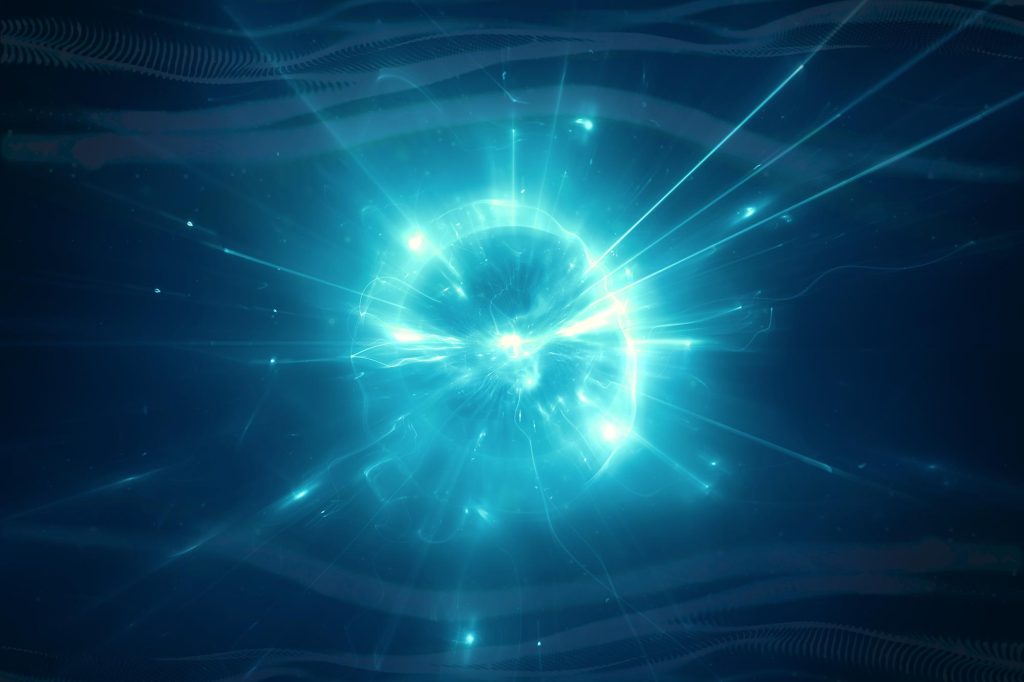When top research teams collaborate, groundbreaking discoveries often follow. This was the case when quantum physicists from the Physikalisch-Technische Bundesanstalt (PTB) and the Max Planck Institute for Nuclear Physics (MPIK) in Heidelberg combined atomic and nuclear physics with unprecedented precision, using two different measurement techniques.
Working alongside them, theoretical physicists from the Technical University of Darmstadt and Leibniz University Hannover performed new calculations on the structure of atomic nuclei. Their findings demonstrated that measurements of an atom’s electron shell can reveal valuable information about the shape and deformation of its nucleus.
At the same time, these high-precision measurements have helped establish new limits on the possible strength of a dark force acting between neutrons and electrons. The study’s results have been published in the latest issue of Physical Review Letters.
For nearly a century, scientists have known that much of the universe’s matter is invisible, existing as mysterious dark matter that interacts with ordinary matter through gravity. However, it remains uncertain whether there are additional “dark forces” that can “communicate” with both dark and visible matter.
If such forces exist, they should also affect atoms, which modern technology allows scientists to study with extreme precision. “Measuring the shift in electronic resonances in isotopes is a particularly powerful method for shedding light on the interaction between nuclear and electron structure,” Tanja Mehlstäubler explains. Isotopes are different forms of the same element, distinguished only by variations in the number of neutrons in their nuclei.
A Surprising Discovery in Ytterbium Isotopes
In 2020, researchers at the Massachusetts Institute of Technology (MIT) observed something unexpected while studying isotope shifts in the element ytterbium. Their measurements revealed a nonlinear deviation — a result that did not align with existing theories.
This finding sent shockwaves through the physics community. Could this anomaly be the first sign of a new “dark force,” or was it instead revealing previously unknown properties of atomic nuclei? Had atomic physicists inadvertently stepped into nuclear physics simply by comparing the transition frequencies of electrons in different isotopes?
High-Precision Measurements to Solve the Puzzle
Driven by this question, Tanja Mehlstäubler from PTB in Braunschweig and Klaus Blaum from MPIK in Heidelberg set out to investigate the ytterbium isotope shifts. Their research teams carried out high-precision measurements of atomic transition frequencies and isotope mass ratios of ytterbium isotopes. Linear high-frequency ion traps and ultra-stable laser systems were used for optical spectroscopy at PTB.
At MPIK, the isotope mass ratios were determined in the PENTATRAP Penning trap mass spectrometer. Both measurements were up to a hundred times more accurate than previous measurements of this kind.
Confirming the Anomaly and Redefining Limits
The researchers confirmed the anomaly, and the team was able to provide an explanation with the help of new nuclear theory calculations by Achim Schwenk’s group at TU Darmstadt. In collaboration with theoretical atomic physicists from MPIK in Heidelberg and the University of New South Wales in Sydney as well as particle physicists from Leibniz University Hannover, they were able to establish a new limit for the existence of dark forces.
New Insights into Atomic Nuclei and Neutron Stars
The international collaboration team was even able to use this data to obtain direct information about the deformation of the atomic nucleus along the ytterbium isotope chain. This can provide new insights into the structure of heavy atomic nuclei and into the physics of neutron-rich matter, which forms the basis for understanding neutron stars.
Bridging Atomic, Nuclear, and Particle Physics
This research opens up new opportunities for atomic, nuclear, and particle physics to collaborate in the search for new physics and to obtain a better understanding of the complex phenomena that determine the structure of matter.
Reference: “Probing New Bosons and Nuclear Structure with Ytterbium Isotope Shifts” by Menno Door, Chih-Han Yeh, Matthias Heinz, Fiona Kirk, Chunhai Lyu, Takayuki Miyagi, Julian C. Berengut, Jacek Bieroń, Klaus Blaum, Laura S. Dreissen, Sergey Eliseev, Pavel Filianin, Melina Filzinger, Elina Fuchs, Henning A. Fürst, Gediminas Gaigalas, Zoltán Harman, Jost Herkenhoff, Nils Huntemann, Christoph H. Keitel, Kathrin Kromer, Daniel Lange, Alexander Rischka, Christoph Schweiger, Achim Schwenk, Noritaka Shimizu and Tanja E. Mehlstäubler, 11 February 2025, Physical Review Letters.
DOI: 10.1103/PhysRevLett.134.063002








